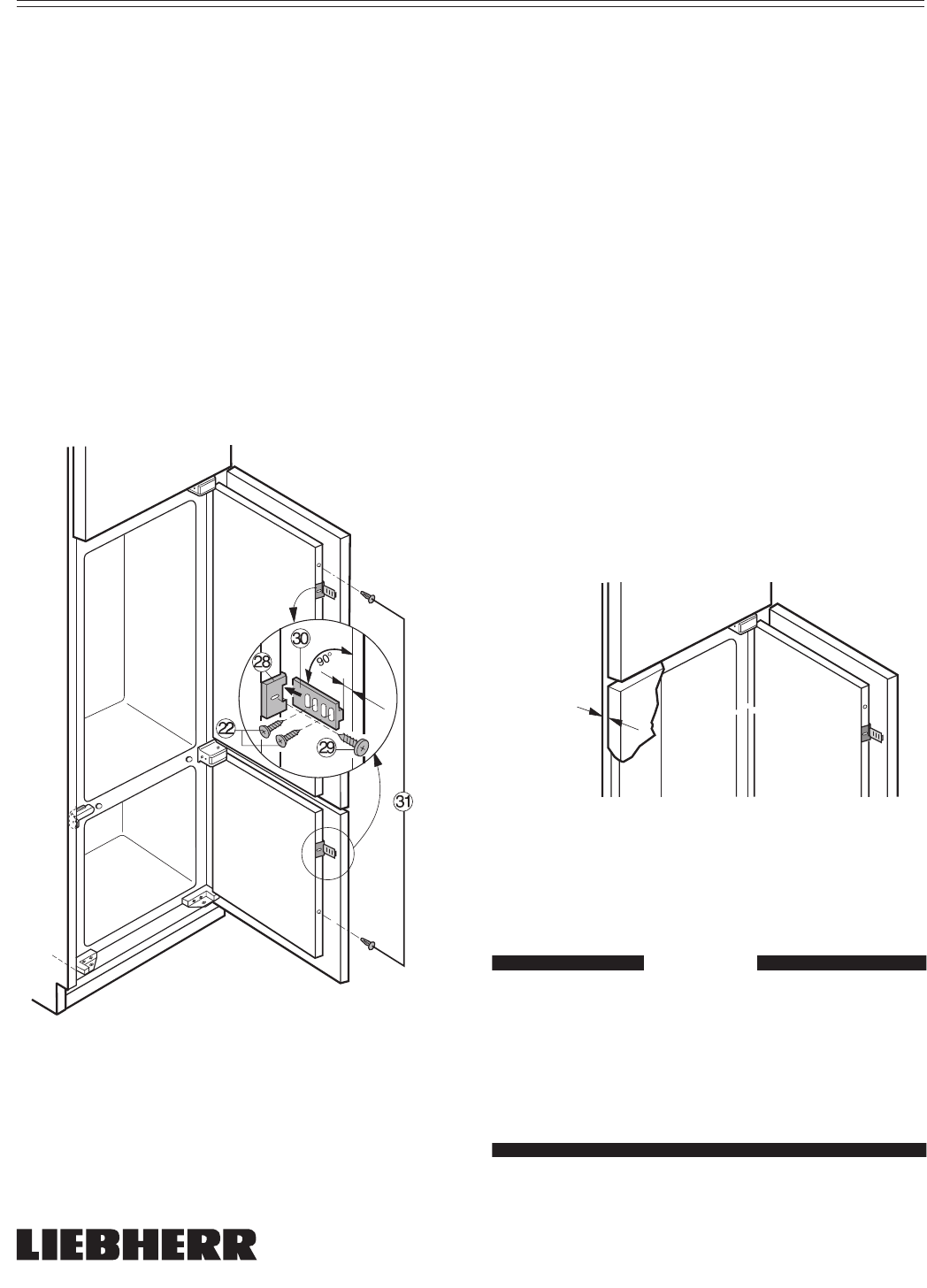
18
HC 1001 / HC 1050
A delight in freshness
INSTALLATION
Attaching the Kitchen
Cabinet Doors
- Figures 25, 26
1. Attach at least one connecting element
(Fig. 25, 28) to each appliance door using
the screws (Fig. 25, 29) provided. Some large
doors may need two connecting elements
(Fig. 25, 28) and connecting rails
(Fig. 25, 30).
a) Use the pre-drilled hole(s) in each
appliance door to attach the connecting
element(s) (Fig. 25, 28) to the door of the
appliance.
b) Make sure the connecting elements
(Fig. 25, 28) and connecting rails
(Fig. 25, 30) do not interfere with the
kitchen cabinet door handles.
D
Figure 25
2. Open the kitchen cabinet door completely.
a) Slide one connecting rail (Fig. 25, 30) into
each connecting element (Fig. 25, 28).
b) Attach the connecting rails (Fig. 25, 30)
to the kitchen cabinet doors using the
screws (Fig. 25, 22) provided.
i) Make sure the front edge of each
connecting rail is recessed (dimension
“D” in Figure 25) from the edge of the
kitchen cabinet door.
D = thickness of kitchen cabinet
wall + 1/8 in. (3 mm)
ii) Make sure the connecting rails
(Fig. 25, 30) are parallel to the bottom
edge of the kitchen cabinet doors.
3. Adjust the connecting elements (Fig. 25, 28)
so there is a 1/32 in. (1 mm) gap (Figure 26)
between the door of the kitchen cabinet and
the handle side of the kitchen cabinet wall
when the door is closed.
MIN 1/32"
(1 mm)
Figure 26
4. Use an awl to open the remaining holes on the
front edge of each appliance door. Insert plugs
(Fig. 25, 31) into each hole.
CAUTION
To protect the appliance from possible
damage, allow the appliance to stand
30 minutes to 1 hour in place before
turning the electricity on. This allows
the refrigerant and system lubrication to
reach equilibrium.
7082132-02_KIKNv_USA.indd 187082132-02_KIKNv_USA.indd 18 2/28/2005 11:06:36 AM2/28/2005 11:06:36 AM


















